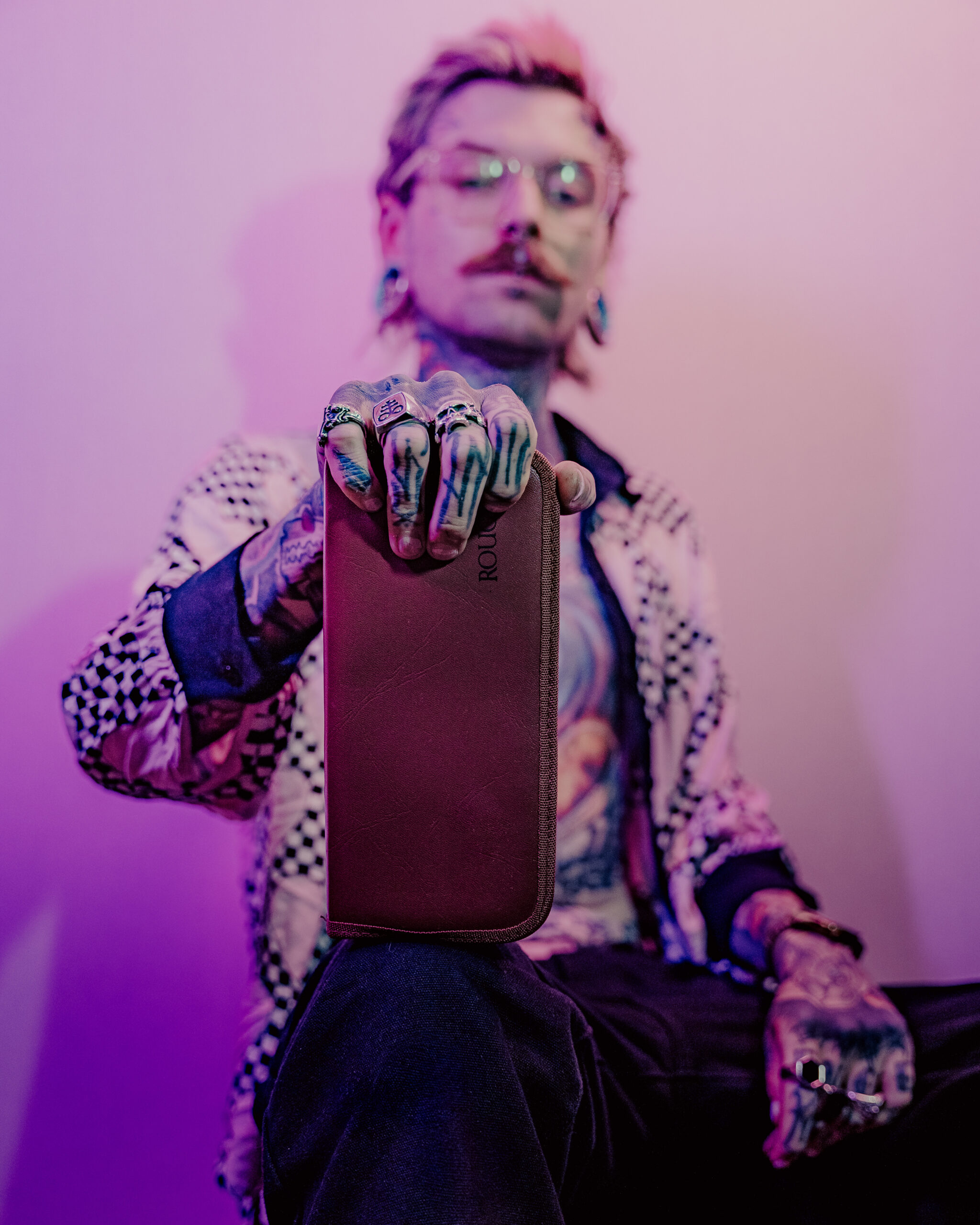Bias and Limitations
Bias and limitations are inherent in language, particularly when it comes to describing complex concepts like subjective perception. When discussing bisexual lighting, for instance, individuals may rely on their personal preferences and cultural background to evaluate its aesthetic appeal.

The problem arises when these subjective perceptions are presented as objective facts. This can lead to a lack of nuance and understanding, as different people may have vastly different opinions on what constitutes “cool” or visually appealing lighting.

One limitation in language is the use of absolute terms like “looks cool.” Such phrases often imply a universal standard, which may not exist. Cultural relativism suggests that cultural values and norms influence individual perceptions, making it challenging to pin down a single definition of what constitutes good or bad lighting.

- Personal experience plays a significant role in shaping opinions on lighting. Individuals who have had positive experiences with certain types of lighting may find them appealing, while others who have not had similar experiences may not share the same enthusiasm.
- The context in which lighting is used can also impact its perceived coolness. For instance, ambient lighting in a home setting may be perceived differently from dimmable LED lighting in a commercial space.
- Design aesthetic is another factor to consider. Personal taste and design style can greatly influence one’s opinion on the attractiveness of lighting.
Another challenge is the lack of standardized terminology when discussing lighting. Different professionals, such as architects, lighting designers, and engineers, may use varying terms to describe the same concept, leading to confusion and miscommunication.
- The importance of context cannot be overstated. Different contexts require different types of lighting, and what is considered cool or functional in one setting may not serve another.
- Individuals with unique needs, such as those who are visually impaired or have specific color preferences, should also be considered when evaluating the aesthetic appeal of lighting.

To mitigate these limitations, it’s essential to acknowledge and respect individual differences in subjective perception. By recognizing that personal opinions and cultural backgrounds play a significant role in shaping opinions on lighting, we can work towards creating more inclusive and nuanced discussions about bisexual lighting.
Embracing complexity is crucial when engaging with subjective concepts like perception. By acknowledging the limitations of language and recognizing the diversity of human experience, we can strive for a deeper understanding of what makes certain types of lighting appealing or unappealing to different individuals.
Bias and limitations are inherent in many aspects of life, including lighting design, which can have a significant impact on our perception and emotions.
A study conducted at the University of California, Los Angeles (UCLA) has highlighted the subjective nature of light perception, demonstrating that individuals’ experiences and cultural backgrounds greatly influence their perception of bias in lighting.
The researchers found that people from different cultural backgrounds perceive light differently, with some cultures valuing bright and cool colors, while others prefer warm and cozy tones.
For instance, a study on the psychological effects of color temperature on mood and cognitive performance found that individuals exposed to warm white light (2700K-3000K) reported feeling more relaxed and calm, whereas those exposed to cool white light (3500K-5000K) reported feeling more alert and focused.
Another study on the impact of lighting color on consumer behavior discovered that consumers from different cultures had varying preferences for certain colors in lighting, with some preferring brighter and more saturated colors, while others preferred softer and pastel hues.
The findings of these studies underscore the importance of considering cultural and individual differences when designing lighting systems, as they can significantly affect the way people perceive and interact with light.
Moreover, biases in lighting design can perpetuate social inequalities by reinforcing existing power structures and cultural norms. For example, the overuse of bright and cool lighting in public spaces can create an atmosphere that is inhospitable to certain groups, such as the elderly or those from non-Western cultures.
In contrast, warm and cozy lighting can be more inclusive, creating a sense of community and belonging among people of all ages and backgrounds. However, this comes with its own set of challenges, as it may not be suitable for all social settings, such as workplaces or public areas that require high levels of alertness and focus.
Ultimately, understanding the complexities of bias and limitations in lighting design is crucial for creating inclusive and culturally sensitive spaces that promote social cohesion and well-being.
Designers, policymakers, and architects must be aware of these factors when making decisions about lighting systems, considering the potential impact on individuals and communities from diverse backgrounds.
By acknowledging and addressing bias in lighting design, we can create a more equitable and harmonious built environment that values diversity and promotes social inclusion.
Bias and limitations play a significant role in the assessment of bisexual lighting effects.
- The perception of bisexual lighting can be influenced by individual experiences and cultural backgrounds.
- Some individuals may associate bisexual lighting with certain emotional responses or memories, which can affect their subjective experience.
- This phenomenon is often referred to as the “subjective nature of lighting effects,” highlighting the need for personalized evaluations rather than relying solely on empirical data.
Moreover, language limitations hinder effective communication about bisexual lighting.
- English language terminology lacks specificity and clarity regarding bisexual lighting, leading to confusion among non-experts and experts alike.
- The absence of a universally accepted definition for “bisexual lighting” creates challenges in standardization and consistency across various fields of study and applications.
- Different researchers and practitioners use distinct terms, such as “color temperature,” “color rendering index,” or “spectral power distribution,” to describe similar phenomena, further obscuring clear communication.
Standardization in language English is crucial for establishing a shared understanding among experts in the field of lighting.
- Developing standardized terminology and classification systems can facilitate more precise descriptions of bisexual lighting effects.
- Clear definitions can also enhance the development of empirical methodologies to measure and analyze these effects, ultimately contributing to a greater understanding of their impact on human perception and behavior.
However, standardization is not always straightforward, as it may require balancing the need for clarity with the limitations imposed by linguistic complexity.
- English language nuances, such as idiomatic expressions and figurative language, can limit the ability to convey nuanced ideas about bisexual lighting.
- Furthermore, existing terminologies may be deeply ingrained in cultural contexts, making it challenging to devise universally applicable definitions.
Addressing bias and limitations in language English is essential for promoting effective communication and advancing research on bisexual lighting.

- By acknowledging the subjective nature of perception and the need for precise terminology, researchers can develop more sophisticated methodologies to assess and describe the effects of bisexual lighting.
Ultimately, recognizing the complexities of language English and bias in assessment can contribute to a deeper understanding of bisexual lighting effects.
- By adopting a more nuanced approach to communication and research, we can strive for greater accuracy and clarity in our understanding of this complex phenomenon.
The concept of bias in the context of color temperature in lighting refers to the subjective and often inconsistent nature of how different colors are perceived by humans.
Bias occurs because people’s perception of color temperature can vary greatly depending on factors such as age, experience, and cultural background. For instance, some individuals may perceive a particular warm white light as blue, while others see it as yellow. This variation in perception leads to inconsistent measurements and interpretations of color temperature.
Furthermore, the lack of standardization in lighting terminology contributes to its problematic nature. The absence of a universally accepted definition of color temperature means that manufacturers and designers may use different terms or scales to describe the same effect.
This can lead to confusion among consumers, who may not fully understand the implications of the color temperature they are purchasing. For example, a product labeled as “warm white” might actually contain more blue light than expected, which could be detrimental to human health in excessive amounts.
The Lighting Research Center at Rensselaer Polytechnic Institute (RPI) has identified this issue and notes that there is no universally accepted definition of color temperature. This lack of standardization can lead to misinterpretation and inconsistent results when trying to measure or compare color temperatures.
In addition, the current color temperature scale ranges from approximately 1800K (very warm white) to 6500K (very cool white), with various intermediate values in between. However, these scales are not always clearly defined or consistently used, which can make it challenging for designers and manufacturers to communicate effectively about their products.
For instance, some people might perceive a color temperature of around 3200K as warm and cozy, while others might see it as relatively cool and blueish. This variation in perception highlights the importance of understanding individual differences in color perception and how they impact our interpretation of lighting characteristics.
A more standardized system for describing color temperature would help to address these issues. It could include a clearer and more consistent definition of color temperatures, along with guidelines for manufacturers to ensure consistency across different products.
In summary, the absence of standardization in lighting terminology contributes significantly to the problematic nature of bias in color temperature perception. A clear and standardized system for describing color temperatures would help to minimize confusion and ensure that consumers are aware of what they are purchasing.
Health and Well-being Concerns
The insufficiency of _light_ can have a significant impact on both physical and mental health, with far-reaching consequences for overall well-being.
Visual Acuity: Insufficient lighting can impair visual acuity, making it difficult to perform daily tasks such as reading, writing, and even driving. This can lead to increased risk of accidents, errors, and injuries.
Mood Disturbances: _Inadequate_ lighting has been linked to the development of Seasonal Affective Disorder (SAD), a type of depression that occurs during the winter months when sunlight is scarce. Other mood disorders, such as anxiety and irritability, can also be exacerbated by insufficient light.
Circadian Rhythms: The human body relies on natural light-dark cycles to regulate its internal clock, which governs various bodily functions including sleep-wake cycles, hormone secretion, and metabolism. Insufficient lighting can disrupt these delicate rhythms, leading to problems with sleep quality, duration, and overall rest.
Physical Health Concerns: _Inadequate_ lighting has been associated with a range of physical health issues, including:
* Weakened immune function, increasing the risk of illness and infection
* Fatigue, lethargy, and decreased productivity
* Increased risk of musculoskeletal disorders, such as back pain and carpal tunnel syndrome
* Poor eye health, including cataracts, macular degeneration, and eye strain
* Reduced metabolic function, potentially contributing to weight gain and metabolic disorders.
Mental Health Implications: Insufficient lighting can also have a profound impact on mental health, particularly in individuals with pre-existing conditions such as:
* _Depression_
* Anxiety disorders
* Bipolar disorder
* Attention Deficit Hyperactivity Disorder (ADHD)
Solutions and Recommendations:
* Ensure adequate illuminance levels of 500 lux in public spaces, and 1000 lux in private living areas
* Use full-spectrum lighting, which mimics natural outdoor light, to promote better mood and overall well-being
* Invest in smart lighting systems that can adjust brightness and color temperature based on the time of day and ambient light conditions
* Consider biophilic design principles, incorporating natural elements and materials into built environments to promote a sense of connection to nature.
* Prioritize regular eye exams and vision care to prevent eye problems associated with inadequate lighting.
The importance of adequate *lighting* in workplaces cannot be overstated. Research by the National Institute for Occupational Safety and Health (_NIOSH_) highlights the significance of sufficient illumination in reducing eye strain, fatigue, and decreasing productivity.
Adequate lighting is crucial in preventing eye problems associated with prolonged periods of inadequate light exposure. Inadequate *lighting* can lead to a range of health issues, including *dry eyes*, blurred vision, headaches, and even long-term damage to the retina.
According to _NIOSH_, insufficient lighting can cause workers to squint or strain their eyes to see clearly, leading to discomfort and decreased productivity. This can result in reduced job performance, increased absenteeism, and presenteeism (being at work but not fully productive).
The consequences of inadequate *lighting* go beyond individual workers, with the potential to impact business operations as a whole. Studies have shown that workplaces with poor lighting are more likely to experience accidents, errors, and other safety issues, ultimately affecting bottom line results.
A well-lit workspace also benefits employees’ mental health and well-being. Research has found that adequate *lighting* can improve mood, reduce stress, and increase feelings of productivity and motivation.
The ideal level of illumination for a workplace depends on the specific task being performed and the type of work being done. However, _NIOSH_ recommends a minimum of 10 foot-lamberts (ft-Lm) for general office tasks and 20 ft-Lm for tasks that require more focused attention.
Additionally, *task-based lighting* can help to reduce eye strain and improve visibility. This type of lighting is designed to provide the right amount of light for specific tasks, such as reading or computer work.
Achieving the right balance between *lighting* levels and employee comfort can be achieved through careful design and installation. By incorporating natural light sources, such as windows and skylights, into building designs, architects and facility managers can help reduce the need for artificial lighting and create a healthier work environment.
Furthermore, workplaces can benefit from implementing *lighting* controls that adjust to changing ambient conditions. This can include timers, sensors, or smart lighting systems that automatically adjust light levels based on occupancy and time of day.
Finally, it is essential for employers to ensure that workers have access to regular eye exams and vision testing to monitor their visual health and address any potential issues early on.
Artificial lighting has become an integral part of our daily lives, with its widespread use in both residential and commercial settings. While it provides numerous benefits, such as improved visibility and ambiance, over-reliance on artificial lighting can have negative effects on our physical and mental health.
One of the primary concerns is the disruption to our natural circadian rhythms. Exposure to bright artificial lights, especially in the evening hours, can suppress the production of melatonin, the hormone that regulates our sleep-wake cycles. This can lead to insomnia, daytime fatigue, and other sleep-related disorders.
Another issue is the impact on eye health. Prolonged exposure to artificial lighting, particularly blue light emitted from screens and LED bulbs, can cause digital eye strain, dryness, and increased risk of age-related macular degeneration.
- Excessive use of artificial lighting can contribute to Seasonal Affective Disorder (SAD), a type of depression that occurs during the winter months due to lack of sunlight.
- The constant flux of light and darkness from artificial sources can also affect our body’s natural production of serotonin, a neurotransmitter that regulates mood, appetite, and sleep patterns.
Furthermore, over-reliance on artificial lighting can lead to an increased risk of vitamin D deficiency. Natural sunlight triggers the production of vitamin D in our skin, which is essential for bone health, immune function, and overall well-being. Artificial lighting, however, cannot replicate this process.
- Excessive use of artificial lighting has also been linked to an increased risk of obesity, as it can interfere with the body’s natural hunger hormones, leading to overeating and weight gain.
- Additionally, artificial lighting can lead to a sedentary lifestyle, as we spend more time indoors under bright lights and less time engaging in physical activity outdoors.
The effects of over-reliance on artificial lighting are not limited to individual health concerns. It also has broader societal implications, such as:
- Disruption to natural migration patterns and behavior of animals, which can have cascading effects on ecosystems.
- Impact on agricultural productivity, as excessive lighting can suppress plant growth and affect crop yields.
In conclusion, while artificial lighting provides numerous benefits, over-reliance on it can have significant negative impacts on our health, well-being, and the environment. It is essential to strike a balance between utilizing artificial lighting and spending time outdoors under natural sunlight.
The World Health Organization (WHO) has highlighted a crucial aspect of health and well-being that is often overlooked: our reliance on artificial lighting.
Research suggests that overreliance on artificial lighting can disrupt our natural circadian rhythms, leading to sleep disorders, increased risk of chronic diseases, and negative impacts on mental health.
So, what exactly are the health concerns associated with artificial lighting?
- Sleep Disorders:
- Exposure to excessive artificial light in the evening can suppress the production of melatonin, the hormone responsible for regulating sleep-wake cycles, leading to insomnia and other sleep disorders.
- Circadian Rhythm Disruption:
- Artificial lighting can trick our brains into thinking it’s still daytime, even when it’s nighttime, making it difficult to fall asleep and maintaining a healthy circadian rhythm.
- Increased Risk of Chronic Diseases:
- Disrupted circadian rhythms have been linked to an increased risk of chronic diseases, including obesity, diabetes, cardiovascular disease, and certain types of cancer.
- Negative Impacts on Mental Health:
- Exposure to artificial lighting has been linked to an increased risk of depression, anxiety, and other mental health disorders.
- Disrupted Sleep Patterns:
- Artificial lighting can also lead to disrupted sleep patterns, which can have a ripple effect on overall physical and mental well-being.
- Symptoms of Light Exposure:
- Cheekiness or pale skin due to lack of sunlight exposure.
- Difficulty sleeping, insomnia, and sleep disorders.
- Increased risk of chronic diseases, such as obesity, diabetes, cardiovascular disease, and certain types of cancer.
- Mood swings, anxiety, depression, and other mental health disorders.
To mitigate these risks, it’s essential to establish a healthy relationship with artificial lighting. Here are some tips:
- Use dim red lights in the evening: Red light has a minimal impact on melatonin production and can help create a relaxing atmosphere for sleep.
- Limit screen time before bed: The blue light emitted from screens can suppress melatonin production, making it difficult to fall asleep.
- Get some morning sunlight: Exposure to natural sunlight in the morning helps regulate circadian rhythms and sets our bodies up for a healthy day.
- Use smart lighting that adjusts brightness and color temperature: Some smart light bulbs can adjust their brightness and color temperature based on the time of day, helping minimize disruption to our natural rhythms.
By being mindful of our reliance on artificial lighting and taking steps to mitigate its negative effects, we can promote better health and well-being for ourselves and those around us.
Shop sexy tights, fishnet tights, and suspender tights at Peaches and Screams
Bye Bye Belly Blog
- Sculptra Surrey – Collagen Stimulation Therapy Near Long Ditton, Surrey - May 31, 2025
- Sculptra Surrey – Collagen Stimulation Therapy Near Long Ditton, Surrey - May 31, 2025
- Navigating Sexual Identity In The Digital Age - May 30, 2025
